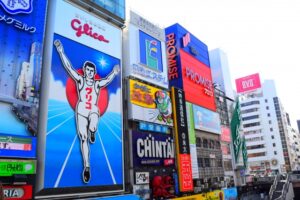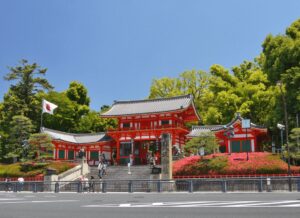10 Must-Visit Temples in Kyoto
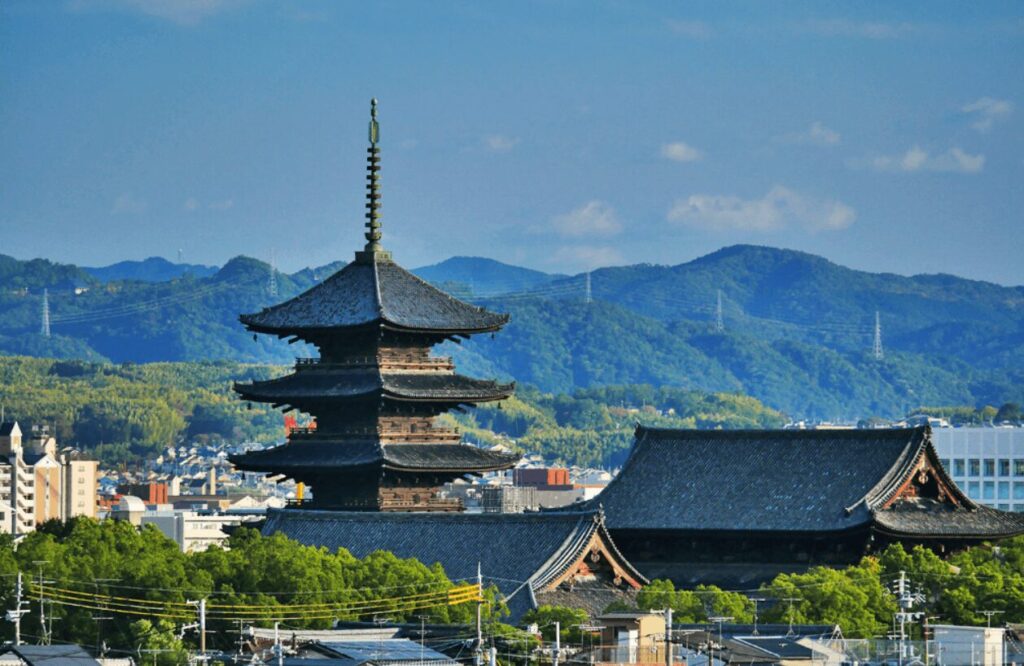
Kyoto is home to more than two thousand temples and shrines.
For anyone seeking a traditional side of Japan, temples in Kyoto are a must-visit.
Immerse yourself in these historical architectures for an escape from reality.
- Kinkaku-ji (金閣寺) - a must-see when visiting Kyoto!
- Ginkaku-ji (銀閣寺) - explore the beauty of an old retirement villa
- Kiyomizu-dera (清水寺) - a bustling favorite for tourists
- Ryoanji (龍安寺) - immerse yourself in the beauty of Japanese stone gardens
- Daitoku-ji (大徳寺) - a temple enthusiasts' heaven
- Toji Temple (東寺) - visit here for the notable pagoda
- Nanzenji (南禅寺) - discover the ancient Roman aqueduct
- Daisen-in Temple (大仙院) - a withstanding sub-temple of Daitoku-ji
- Chion-in Temple (知恩院) - take a detour to Chion-in when in Higashiyama!
- Gio-ji (祇王寺) - for a little escape to nature
- Summary
1. Kinkaku-ji / Golden Pavilion (金閣寺) - a must-see when visiting Kyoto!
Kinkaku, as the name suggests, is a temple literally covered in gold, and visitors can observe the mirrored reflection of the Kinkaku-ji on the pond surrounding it.
It’s been a World Heritage Site for 30 years, since its designation in 1994.
The beauty of the surroundings resembles that of a Buddhist paradise.
Kinkaku-ji's Official Website
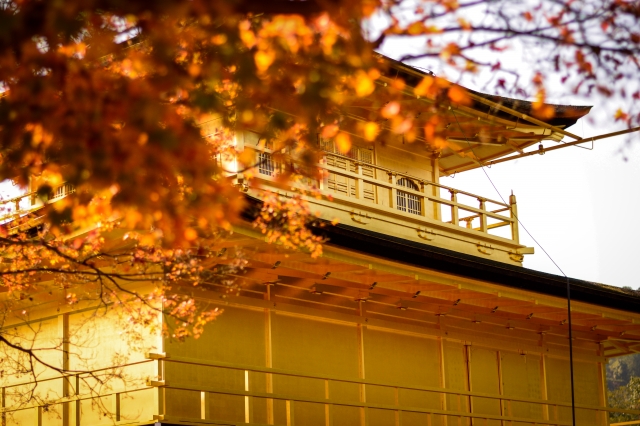
2. Ginkaku-ji / Silver Pavilion (銀閣寺) - explore the beauty of an old retirement villa
Though it’s named the “Silver Pavilion”, it isn't actually covered in silver.
Initially built as a homage to Kinkaku-ji, it was once a shogun’s retirement villa.
It’s a chance to see the tranquil beauty of the Japanese gardens blending in with the architecture.
Ginkaku-ji's Official Website
Have a look at this article as well! Ginkakuji: The Silver Pavilion of Kyoto

3. Kiyomizu-dera (清水寺) - a bustling favourite for tourists
The temple’s wooden stage (butai) is undoubtedly what the temple is famous for.
The 13-meter stage offers a magnificent panoramic view of Kyoto for its height.
Interestingly, “to jump off the stage at Kiyomizu” in Japanese is used in the same context as “take the plunge” in English.
Kiyomizudera's Official Website
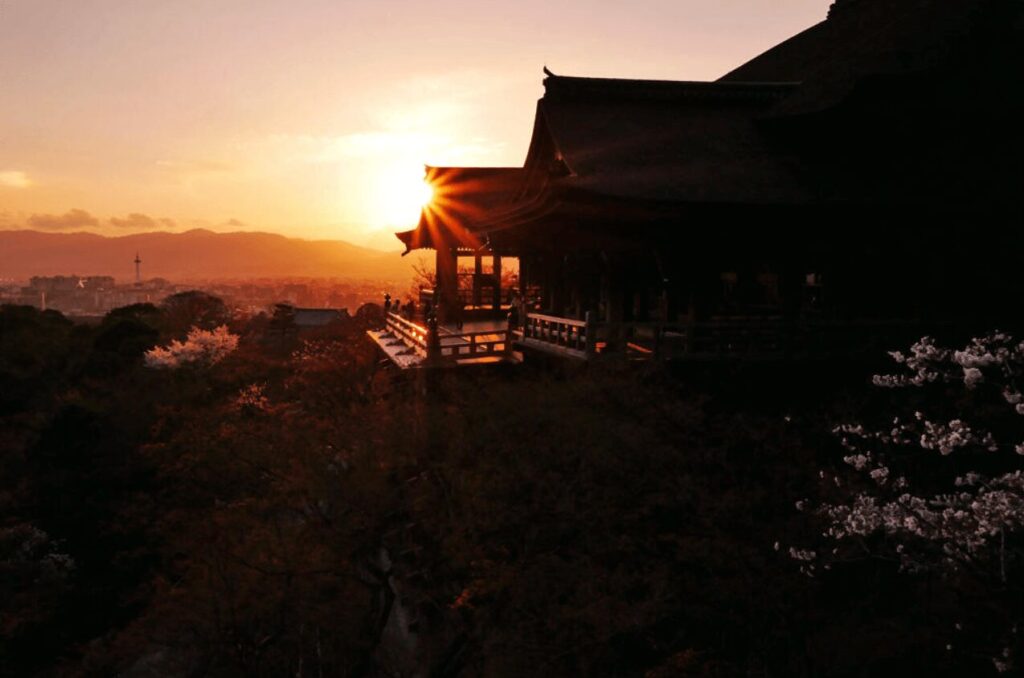
4. Ryoanji (龍安寺) - immerse yourself in the beauty of Japanese gardens
This temple is popular for its beautiful garden (karesansui) made of pebbles and stones which illustrate the flow of water.
At any time in the year, Ryoanji offers a different side of its aestheticism, like the momiji in autumn and cherry blossoms in spring.
It’s a great place to get lost in nature and simply immerse yourself in the transience of time.
Ryoanji's Official Website
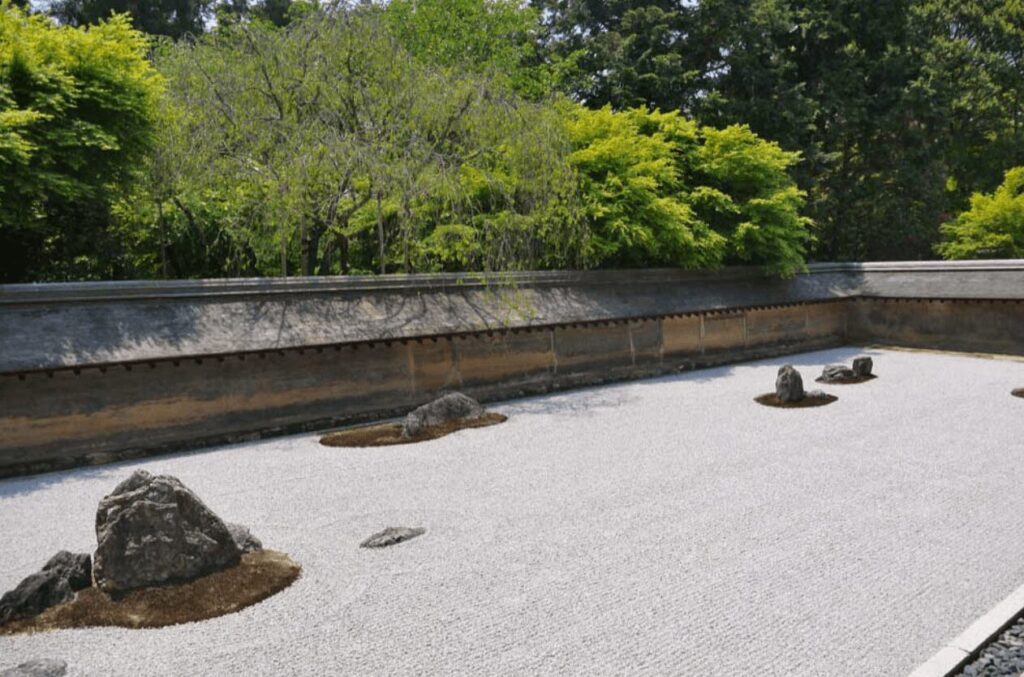
5. Daitoku-ji (大徳寺) - a temple enthusiasts’ heaven
Daitokuji Temple is a Zen Buddhist temple, with nearly 20 sub temples in the compound.
Although much of the temple was destroyed by fire during the Onin War (1467-1477), the vast temple grounds are dotted with 24 pagodas, historical architecture, and beautiful gardens.
The temple is also famous for its tea ceremonies held every month.
Visitors can experience traditional Japanese culture and the spirit of Zen in a tranquil atmosphere.
Daitoku-ji's Official Website
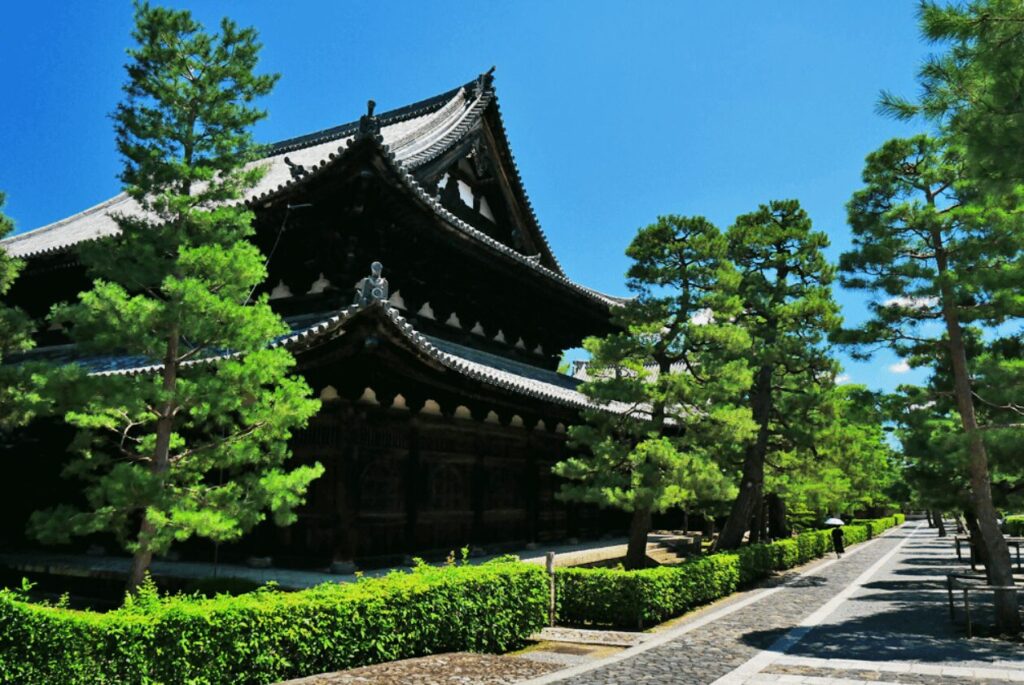
6. Toji Temple (東寺) - visit here for the notable pagoda
Toji Temple is especially popular for its national treasure, the Five-Storey Pagoda, which can actually be seen from the window of the Tokaido Shinkansen.
Not only does it have the world’s largest wooden statue of Amida Buddha, it is also a remnant of the Heian Period, built approximately 1,200 years ago.
For both a scenic and historic adventure, Toji Temple provides tourists with cherry blossoms and autumn leaves in spring and autumn, respectively.
Toji Temple's Official Website

7. Nanzenji (南禅寺) - discover the ancient Roman aqueduct
Nanzenji is a Zen Buddhist temple and a former retirement villa for Emperor Kameyama in the Higashiyama district, and is surrounded by beautiful mountains.
The grand Sanmon Gate offers a stunning view, especially in autumn where the foliage provides a spectacular sight.
The temple grounds are rich in nature, with an aqueduct reminiscent of an ancient Roman aqueduct and multiple sub-temples that you can explore further.
Though the sub-temples have their own entrance fees, the Nanzenji complex is free of charge!
Nanzenji's Official Website
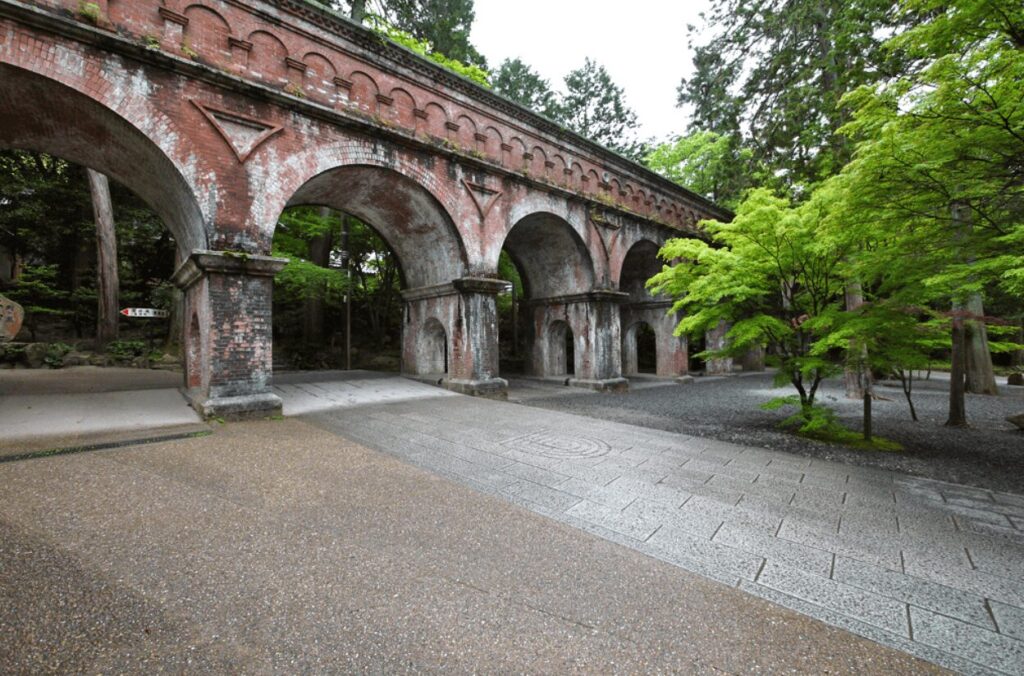
8. Daisen-in Temple (大仙院) - a withstanding sub-temple of Daitoku-ji
Daisen-in Temple is a sub temple of Daitoku-ji Temple.
The main hall of this temple is one of the few original buildings to have survived the fire that destroyed much of Daitoku-ji Temple, making it one of the oldest remaining examples of the Hojo style of Zen-Buddhist architecture.
Daisen-in Temple's Official Website
9. Chion-in Temple (知恩院)- take a detour to Chion-in when in Higashiyama!
Chion-in Temple is a large temple, popular for its enormous front gate.
It is most notable for having the largest bell in Japan on its grounds, which is said to weigh more than several city buses.
As it is located just north of Maruyama Park, the temple grounds are free of entry, and is an invaluable part of any walking tour of the Higashiyama district.
Chion-in Temple's Official Website
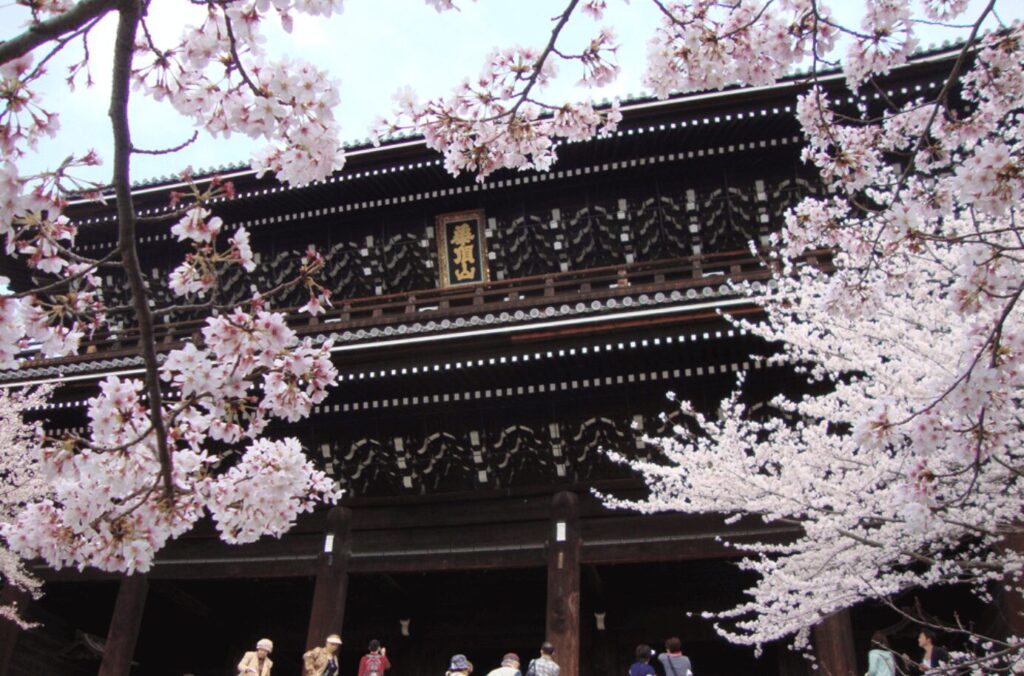
10. Gio-ji (祇王寺)- for a little escape to nature
Gio-ji Temple is a quiet temple surrounded by trees and a green moss carpet-like garden, which becomes contrastingly beautiful in autumn when the rest of the leaves change colours.
The temple was named after Gio, who spent her life as a Buddhist priestess after having her relationship with Taira-no-Kiyomori cut to an end.
You will get to see wooden statues of her and Kiyomori enshrined in the main hall.
Gio-ji's Official Website
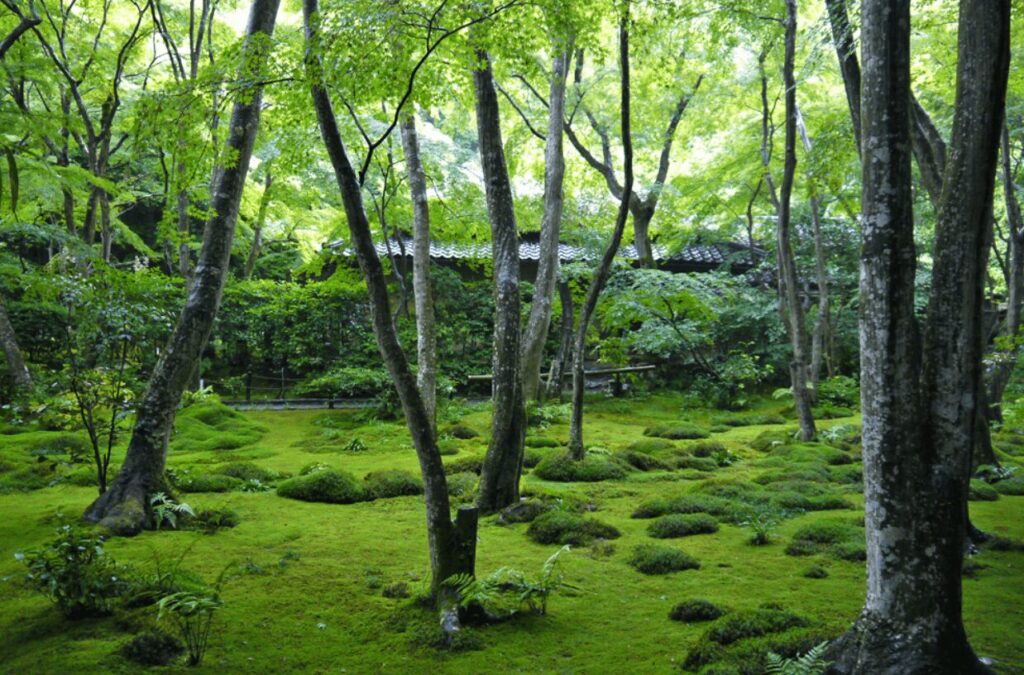
11. Summary
If you are also interested in temples, here is our Ninja Blog article on 10 Must-Visit Temples in Kyoto
If you've asked yourself What's the Difference Between Shrines and Temples in Japan? then here is our Ninja Blog article to satisfy your curiosity!
What are we?
We run Ninja Experience Cafe in Tokyo, Kyoto and Osaka, Japan.
Here you can immerse yourself in Japanese culture through experiencing ninja training.
Both adults and children are welcome to try their hand at defeating the ninja master inside the cafe.
The cafe is an indoor interactive zone, so it can be enjoyed even on rainy days.
If you are thinking "I want to be a real ninja too!” or interested in becoming a real ninja, please visit us.
Reservations can be made here.
Unauthorized copying and replication of the contents of this site, text and images are strictly prohibited.

